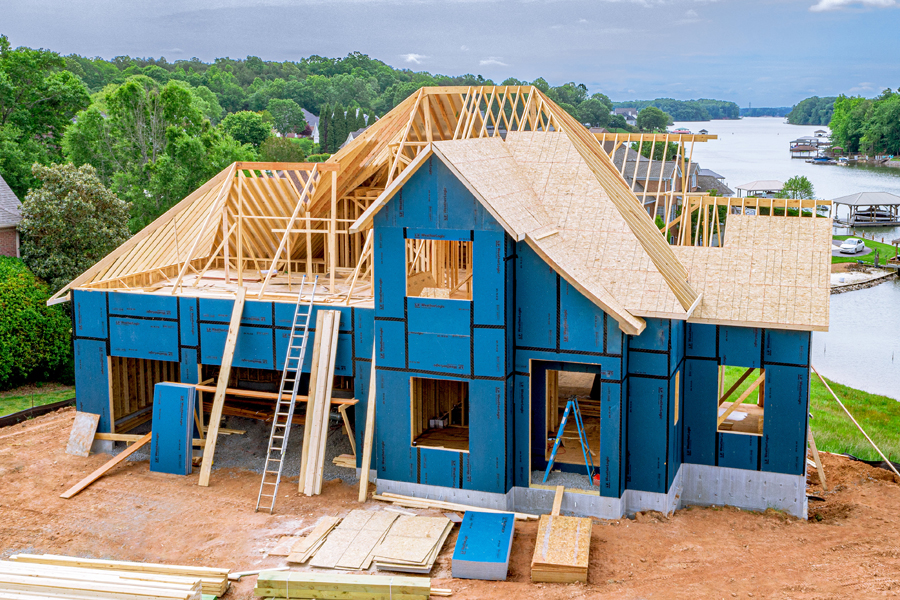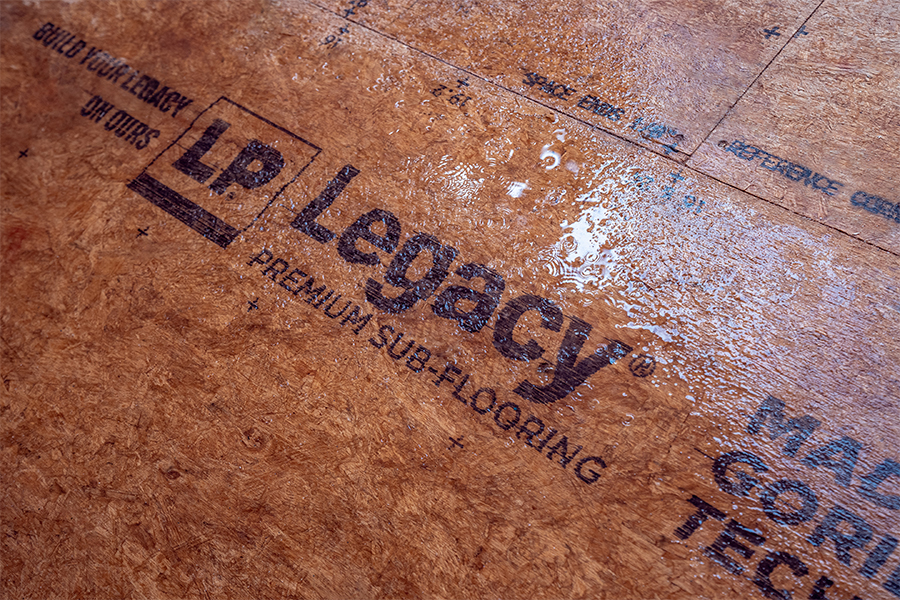Business Advice3 min
Building With Safer Materials
Construction work has its safety risks, and how you approach construction safety affects your jobsite. Every day on the jobsite presents situations that can easily pivot the day's expected outcome. Let's take a moment to review how construction safety can be improved and how building material choices can boost and improve construction safety.
What are the Three Most Common Hazards Found in Residential Construction?
Jeff Yelle, Director, OSB/EWP Technology at LP Building Solutions, often visits customers and assesses LP building solutions on the jobsite. "Tools, products, and the way you perform jobsite tasks are three common hazards found in residential construction."
Let's explore how the LP Structural Solutions portfolio helps you navigate these hazards for a safer jobsite.
1. Using the right tools to improve construction safety
Sometimes it feels a bit clumsy to use an unfamiliar tool. With many LP products, there's no need to equip your team with specialty tools. Standard jobsite carpentry tools are all that's needed to safely measure, cut and install LP Structural Solutions products.
Yelle advises to set up designated areas for storing and cutting materials and to allow enough space for workers to safely perform their tasks. Worksites get crowded fast, so stay on top of the area, clearing debris, electrical cords, and other tripping hazards.
2. Choosing products engineered for efficiency
The LP Structural Solutions portfolio of products helps you work more efficiently by reducing steps in the construction process. Because several of the products pair sheathing with an overlay that serves an additional purpose for the build, steps can often be combined.
For example, LP WeatherLogic® Air & Water Barrier combines Structural I sheathing with a water-resistive overlay. This means that, when you install the product, there is usually no need to install housewrap or roof underlayment (in most cases).

Here are a few additional ways LP Structural Solutions products can reduce workload:
LP Legacy® Premium Sub-Flooring: Able to withstand jobsite weather, so no need to spend time sanding joints.
LP® TechShield® Radiant Barrier: Installs like conventional roof sheathing, requiring no additional labor to install an aftermarket product.

3. Focusing on safe ways to install building products
"The safest task is one that you can avoid doing altogether," Yelle says. "We're always looking for ways to make products that help workers be more efficient, to take away steps and make your jobsite safer."
While it's important to choose building materials that can help you reduce jobsite hazards, taking the time to be aware in the moment is one of the best ways to increase safety.
Yelle fondly recalls a supervisor he had while working in his first manufacturing facility. New to the job, a young Yelle was rushing through a task. "My supervisor called me aside and said, 'You have my permission to take time to be safe. I want you to be productive, but never compromise your safety to do something faster.' This made a big impression--his advice stuck with me--and I learned safety takes time," says Yelle.
"You really have to pause and ask yourself, 'Am I ready to do this task?' Even though you've used the tool a thousand times, take a moment and think about the task you are about to perform. Pull up electrical cords or take a longer, but safer route around," says Yelle. "Even at home, in your own tool shed, take the time to get the proper tool for the job, rather than grabbing whatever is handy."
Explore more ways to improve safety measures in the building industry.
Interested in learning more? This time of year brings unique safety considerations. Begin to improve jobsite safety now with ways to navigate wet springtime construction.
Continue Reading
Resiliency Solutions
5 minIntroducing LP® SmartSide® ExpertFinish® Naturals Collection™: Nature-Inspired Beauty Meets Engineered Performance
We're excited to introduce the LP® SmartSide® ExpertFinish® Naturals Collection™, a bold new addition to our trusted line of engineered wood siding and trim that delivers the warmth and beauty of nature with the advanced protection and performance builders and homeowners expect.
Labor Solutions
5 minChoosing the Right LP® Structural Solutions Product for Your Build
When it comes to building strong, reliable, and high-performing structures, the materials you choose matter. At LP Building Solutions, we understand that every project, whether it's a single-family home or a multifamily development, requires structural components that meet your needs for strength, durability, and efficiency.
Sustainability Solutions
5 minBuilding a More Sustainable Future with LP Building Solutions
In today's world, sustainability is no longer just a buzzword, it's a blueprint for responsible living and smarter building. As the construction industry seeks ways to reduce its environmental footprint, LP Building Solutions is focused on providing innovative building materials for eco-conscious builders to help reshape what it means to build sustainably
News & Stories3 min
History of Partnership with Gary Sinise Foundation
The LP Foundation is a proud partner of the Gary Sinise Foundation, which supports wounded veterans in several ways. You can learn more about the LP Foundation here.